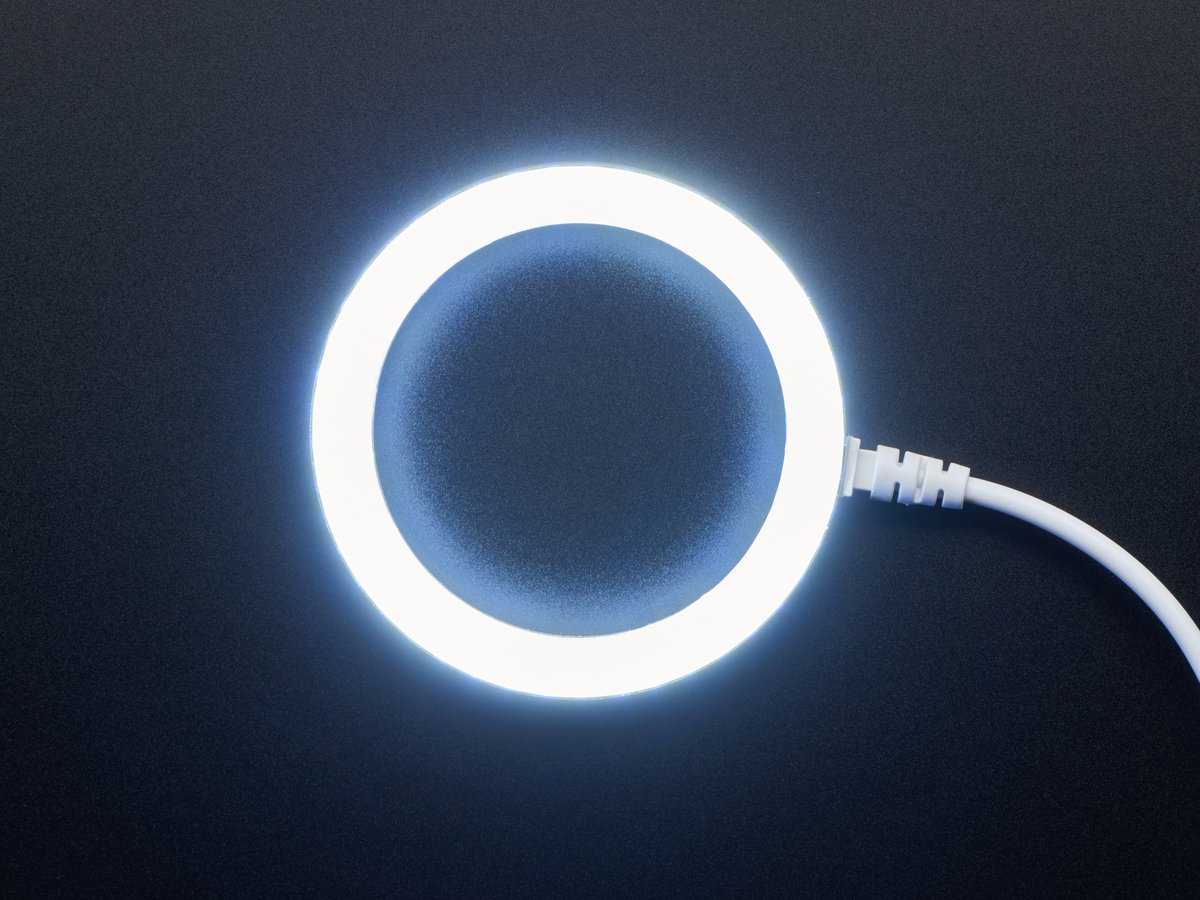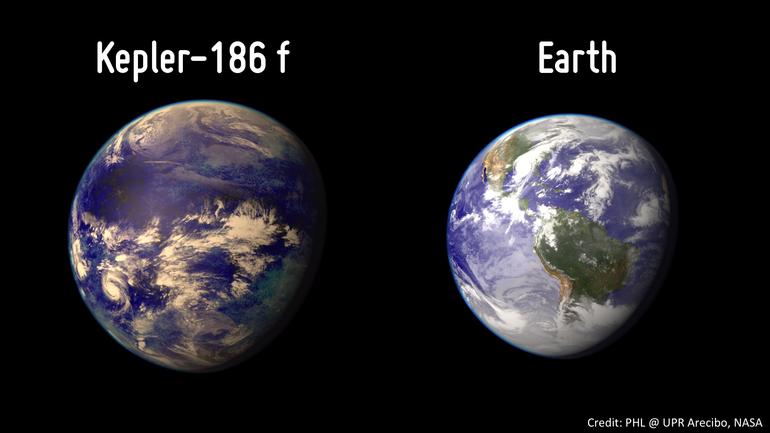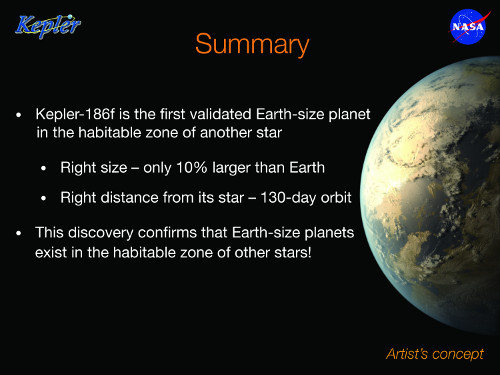The planet hunt has become much more precise in recent months, but the priority of the experts remains focused on those exoplanets which have similar to Earth conditions. One of the most recent discoveries is Kepler-186f ,which is just ten percent larger than our planet, and for the moment, is the strongest candidate to have liquid water on its surface.
The discovery of new exoplanets has the potential to go far beyond the scientific interest. Have you ever wondered how humanity would react if it is established that there is life out there? Now imagine what will be the new religious and philosophical concepts, but the world of science is only looking for the confirmation of what seems inevitable, at least from a mathematical point of view. The number of exoplanets discovered so far is very important, and several of them have properties which allow, at least in theory, the existence of liquid water. One is Kepler-186f .Its star Kepler-186 is a red dwarf that is about 500 light years away (on average) , but completely unattainable for us. Kepler-186f has other four companions, but there are several reasons why this new exoplanet stands out above the rest.
Firstly, it is only 10 percent larger than Earth, so it has been ruled out that it is a gas planet. Then, within the so-called “habitable zone” , a bit near the outer edge. Finally, the radiation flux that Kepler-186f receive is a third of that reaches the Earth. The numbers are logical when you consider that its mother is a red dwarf star, but that level of radiation would be low enough to allow the presence of liquid water. Even so, life not only need water but also energy. Perhaps there is some form of photosynthesis evolved in Kepler-186f , but that is just my imagination.
Thomas Barclay , an astrophysicist at the Ames Research Center of NASA , believes that Kepler-186f will not be the last exoplanet discovered with these parameters. It has not been found before, does not necessarily mean that it’s rare, and a better search with tools such as TESS satellite to be launched in 2017, and the James Webb Space Telescope, which will hopefully be operational in October 2018 will bring many such planets to the list.





